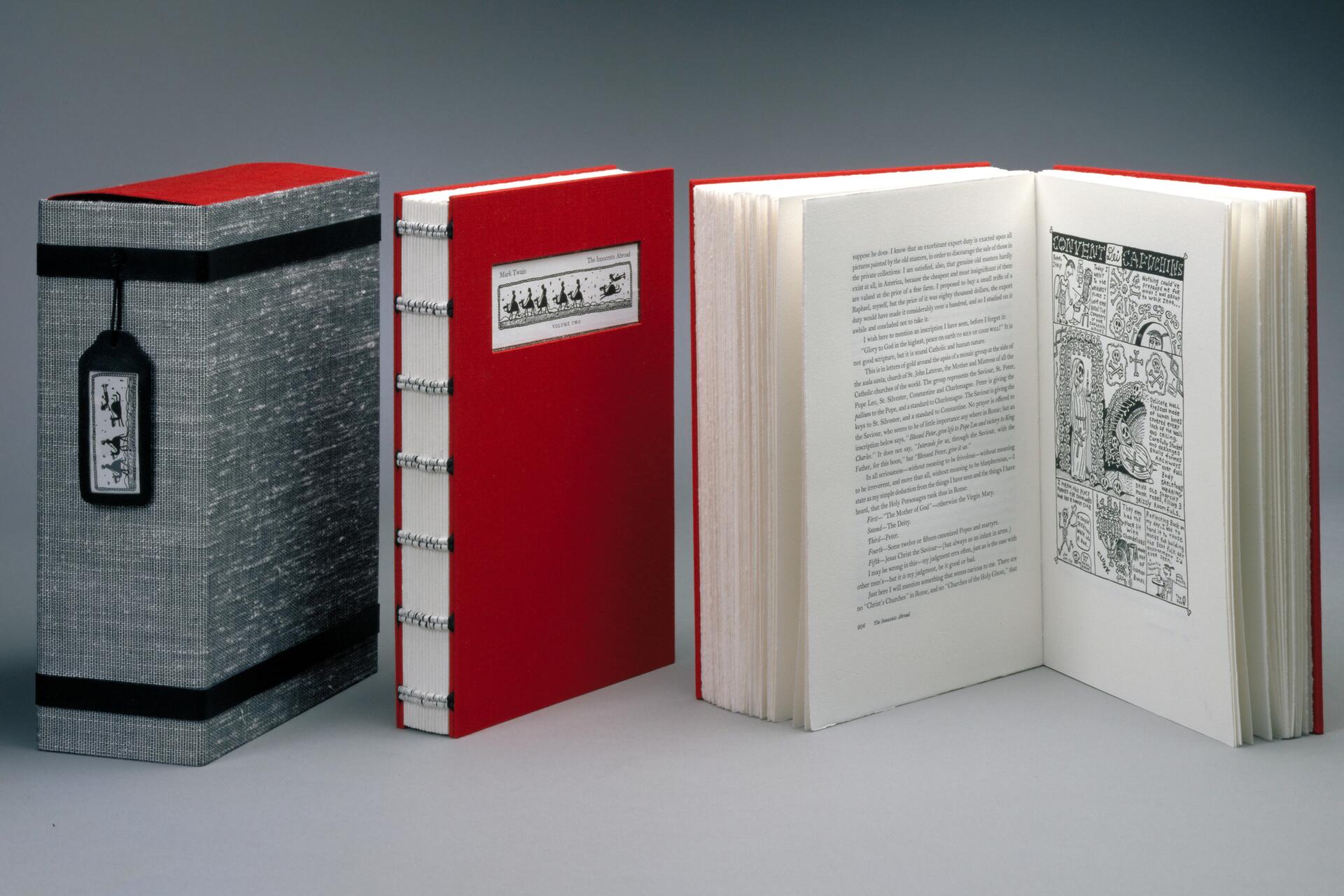Your cart is currently empty!
About Sherwin Beach Press
Some recollections & history
Sherwin Beach Press was launched when Bob McCamant (then art director of the Chicago Reader), decided that a story by Mike Lenehan, “The Essence of Beeing,” which had run in the Reader,1 was too good a story to end its life on newsprint. The life stories of bees and beekeepers were so vividly drawn in words that it deserved a more permanent rendition. Meantime, McCamant had fallen in love with letterpress printing and had started looking at handmade books with awe. So, why not make Lenehan’s story into The Essence of Beeing, a handmade book?

Fortunately the basement of the Rogers Park house where McCamant and his wife Margaret lived2 was equipped with a very solid concrete floor, topped with linoleum, perfect for installing a press. All that was required was to build a concrete ramp tramp down which a press could be moved, find a press, and Sherwin Beach Press would be in business.

McCamant says: “I’ve regarded The New Yorker as the country’s premiere magazine since junior high school, when one of my brothers’ wives subscribed to it during the time she lived with our nuclear family while her husband was in the armed forces.” He doesn’t recall when he discovered “Within the Context of No Context,” which appeared in The New Yorker in 1980,3 when he was busy at the Reader. Did he write to Trow and ask if Sherwin Beach could print it? The press had some respect in the small world of handmade books from The Essence of Beeing, but in 1992, when Sherwin Beach published it, the press wasn’t yet a figure in the bookish world. Maybe Trow just saw and liked Beeing, because he let the press upgrade “Context” to be a limited edition book. [The title is also is also available today as a paperback from the Atlantic Monthly Press.4] Jennifer Hughes was hired to handset and print the edition. In the meantime, McCamant had discovered the binder Trisha Hammer who signed on as the binder of this and subsequent books.
$144 a Month by Steve Bogira was the prime example of a wonderful story which first appeared in the Chicago Reader, but, Sherwin Beach Press founder Bob McCamant writes, “I didn’t think that the printing on newsprint had done justice to the photographs.” Mike Tappin’s wonderful photographs cried out to be printed by Chicago’s premiere artisan lithographic shop, run by Rudy Rohner. Rohner knew that the way to get good letterpress and good halftones on one sheet of paper was to underprint the halftones with sizing before printing the photographs, using offset, on top of the sizing. On this project for the press, he added to the intensity of the photos by doing duotones, not just halftones. Trisha Hammer made the non-adhesive binding.

The Innocents Abroad, released in 1998, was an accident of the fact that Bob McCamant, founder of Sherwin Beach Press, spent ages 12 to 17 with the complete works of Mark Twain in his bedroom. He read almost all of them, and this was his favorite. And realize: Sherwin Beach published [during McCamant’s management] only nonfiction prose, so this story of spoiled Americans bumbling through Europe was a natural.

Ballet for Opening Day, which Sherwin Beach published in 2002, is the prime Chicago story of the “Black Sox” legend, here described by Nelson Algren. Somehow McCamant had made the acquaintance of artist Tony Fitzpatrick (perhaps through the Reader), and Fitzpatrick’s fascination with the story had caused him to produce eight etchings, each a “baseball card” of figures in the incident.


In Poisonous Plants at Table, published in 2006, Sherwin Beach arrived at a higher level of sophistication. It began with an ancient text from a manual of poisonous plants, first published in 1901 by the Reverend Professor G. Henslow. But what made it remarkable was that Audrey Niffenegger wrote and illustrated a story, “Prudence: The Cautionary Tale of a Picky Eater.” This title is long since sold out.
Lee Sandlin’s Saving His Life, which Sherwin Beach Press printed in 2008, was another wonderful Reader story5 which had not been done justice by newsprint reproduction back in 1995. But here we had family snapshots to reproduce, not professional original photographs. It was designed by Martha Chiplis, who also printed the letterpress, and the type cast by Michael Bixler—with subsequent readjustments by Chiplis. Trisha Hammer was the binder.
Searching for Morris Fuller Benton by Juliet Shen, published in 2012, was a meticulous study of the man who is arguably the most important type designer ever produced by the United States. The Sherwin Beach edition solves the problem of letterpress illustration by skipping it and using offset. The long printing process for the letterpress text was achieved by Michael Russem, then at Kat Ran Press. Trisha Hammer was the binder.
- The article is included in the Reader’s online archives at https://chicagoreader.com/news/the-essence-of-beeing/ and is also available via the index of “Selected Articles” on Michael Lenehan’s website: https://www.michaellenehan.com/articles. ↩︎
- Not far from where Chicago’s Sherwin Avenue comes to the beach at Lake Michigan ↩︎
- The article is available on The New Yorker’s website at https://newyorker.com/magazine/1980/11/17/within-the-context-of-no-context. ↩︎
- For details of the 1997 paperback edition, see: https://groveatlantic.com/book/within-the-context-of-no-context/. The essay had also been published together in one volume with Trow’s 1978 profile of Atlantic Records chairman Ahmet Ertegun by Little, Brown & Co. in 1981; The New York Times published a review which is archived online at https://nytimes.com/1981/10/11/books/reality-anemia.html. ↩︎
- Originally published in two parts in the Reader, both parts of the article are available together online, both in the Reader’s archives at https://chicagoreader.com/news/saving-his-life/ and on the late Lee Sandlin’s website at https://leesandlin.com/articles/SavingHisLife.htm. ↩︎

